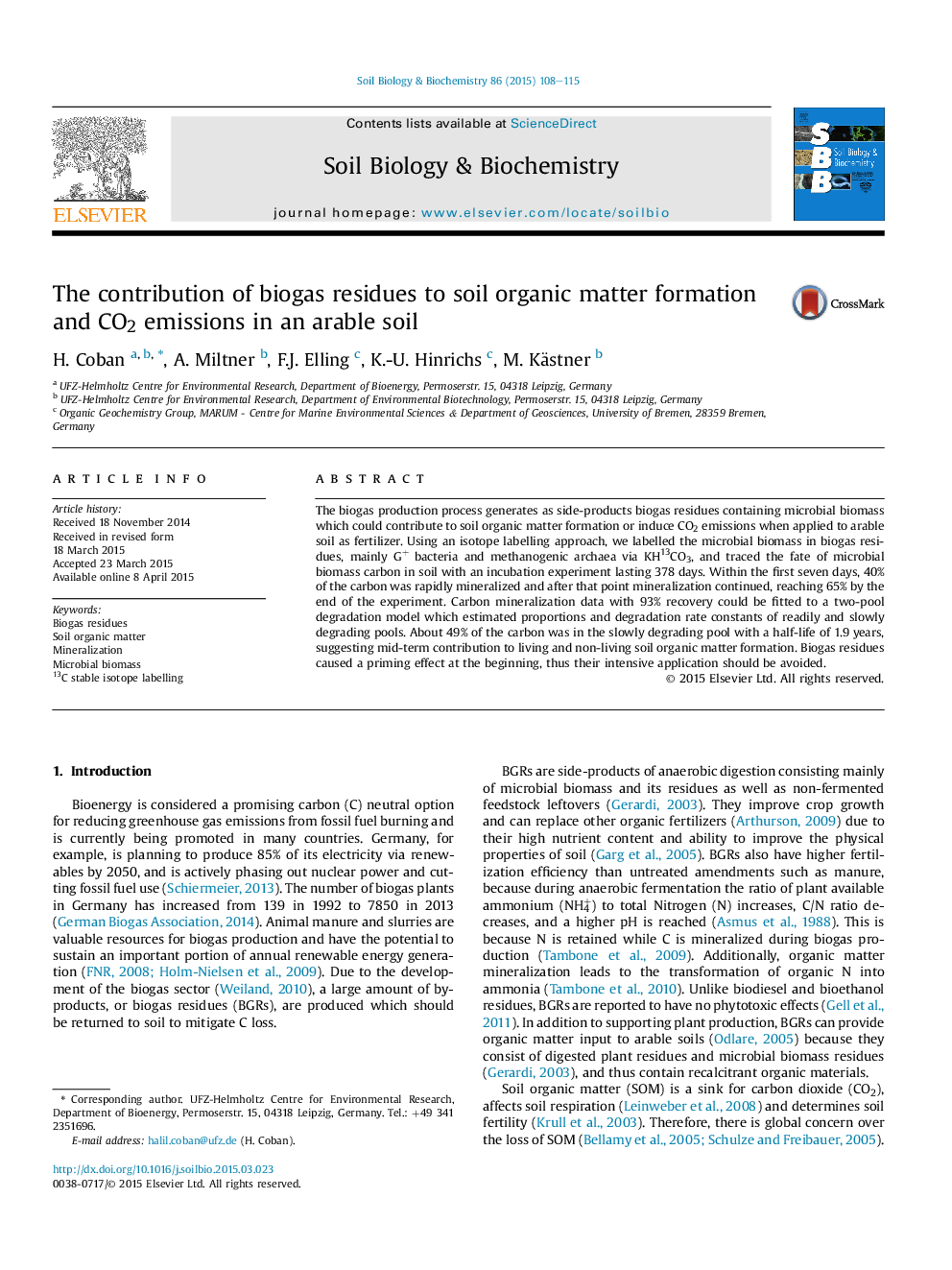| Article ID | Journal | Published Year | Pages | File Type |
|---|---|---|---|---|
| 2024526 | Soil Biology and Biochemistry | 2015 | 8 Pages |
•Microbial biomass in biogas residues was labelled using KH13CO3.•Fate of labelled carbon derived from biogas residues was traced in soil.•Around half of the biogas residues were found to be stable.•Biogas residues resulted in substantial priming effects and thus increased soil organic matter decomposition.
The biogas production process generates as side-products biogas residues containing microbial biomass which could contribute to soil organic matter formation or induce CO2 emissions when applied to arable soil as fertilizer. Using an isotope labelling approach, we labelled the microbial biomass in biogas residues, mainly G+ bacteria and methanogenic archaea via KH13CO3, and traced the fate of microbial biomass carbon in soil with an incubation experiment lasting 378 days. Within the first seven days, 40% of the carbon was rapidly mineralized and after that point mineralization continued, reaching 65% by the end of the experiment. Carbon mineralization data with 93% recovery could be fitted to a two-pool degradation model which estimated proportions and degradation rate constants of readily and slowly degrading pools. About 49% of the carbon was in the slowly degrading pool with a half-life of 1.9 years, suggesting mid-term contribution to living and non-living soil organic matter formation. Biogas residues caused a priming effect at the beginning, thus their intensive application should be avoided.
